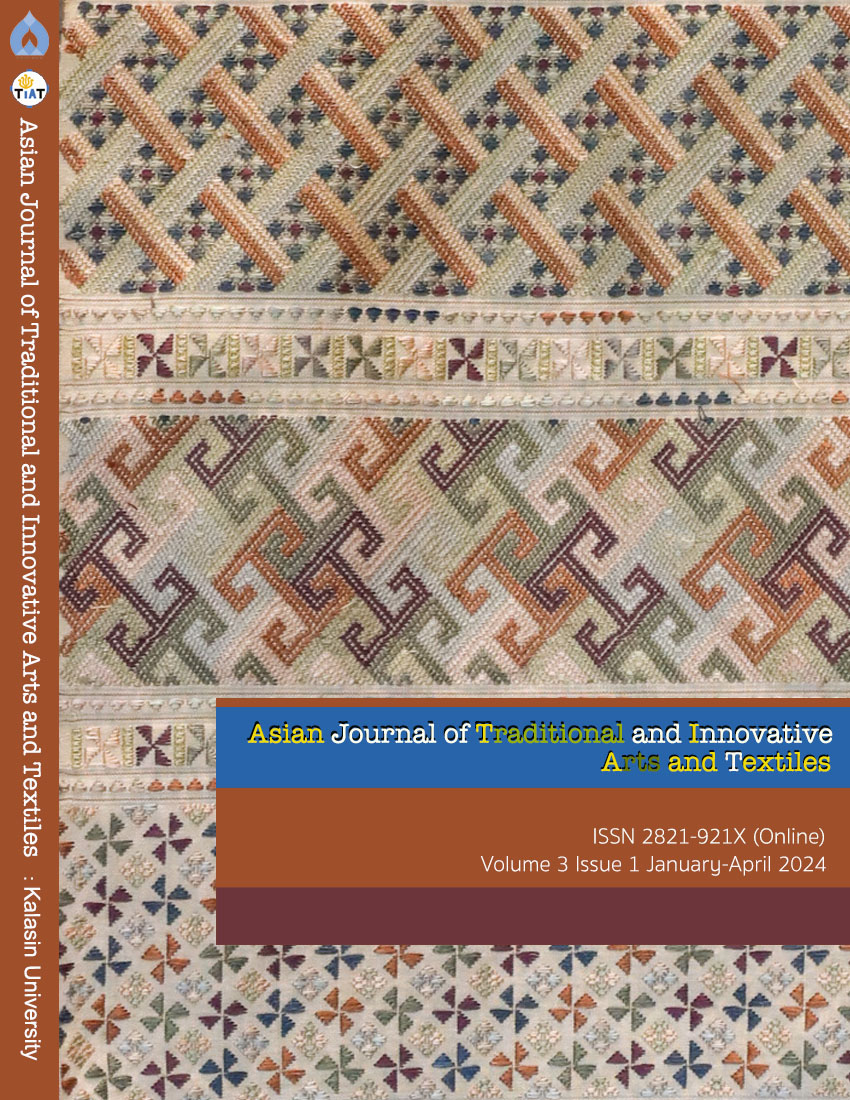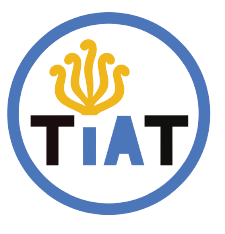Tribal Sculpture Southern Lao People's Democratic Republic: Concepts of semiotics and folklore towards the presentation of representative images in contemporary art
DOI:
https://doi.org/10.14456/tiat.2024.4Keywords:
Tribal Sculpture, Southern Lao People's Democratic Republic, Semiotics, Folklore, Contemporary artAbstract
This article is part of the research on “Tribal Sculpture Southern Lao People's Democratic Republic: Style, Wisdom, and Aesthetics towards the Creation of Contemporary Sculpture” aims to study semiotics and folklore in tribal sculpture of Lao PDR. and used as a framework for creative contemporary art on the issue of identity exploration. Cultural diversity and social criticism Use qualitative research methods. The target group is the Katu Ban Kan Don Mai tribe, Sekong Subdistrict. Three types of interviews are used in research: unstructured, structured, and observational. The data were analyzed using the concepts of Saussure's semiotics and Westhill's folklore. The study found that tribal sculptures are folklore objects that reflect social dynamics. Play a role according to spiritualism beliefs This is consistent with Saussure's comparison of sculpture as a grammatical unit of meaning. The shapes and stories have full meaning when connected to the context of rituals, people, and communities, influencing “Creating contemporary art through anthropological processes,” which is consistent with West Hill saying “The folklore of local cultures has always been the driving force of contemporary art.” which is affected by changes in the culture of nation-states It preserves identity at the conceptual level. to cope with social change politics and economics Therefore, the tribe had to adapt. The existence of the sculpture thus preserves the diverse identities of the tribes. The sculptures and rituals bring out folk wisdom to express identity in various forms. Today's rituals are a visual representation of the tribes affected by the changes. As a result, the adjustments created new meanings and functions for the sculptures that overlapped traditional beliefs. Therefore, introducing sculpture into contemporary art must pay attention to the interpretive context.References
บัญชา ควรสมาคม. (2565). ประติมากรรมชนเผ่า สาธารณรัฐประชาธิปไตยประชาชนลาว ตอนล่าง: กระบวนการวิเคราะห์และ สร้างสรรค์ประติมากรรมร่วมสมัย. การ ประชุมวิชาการระดับชาติและนานาชาติ ศิลปกรรมวิจัยประจำปี 2565 (FAR8) “ศิลป์ท้าเวลา เวลาท้าศิลป์” The Future of Arts : The Challenges of Artists (216-231). ขอนแก่น : คณะ ศิลปกรรมศาสตร์ มหาวิทยาลัยขอนแก่น.
สุปรางค์ จันทวานิช. (2565). ทฤษฎีสังคมวิทยา.กรุงเทพฯ : สำนักพิมพ์จุฬาลงกรณ์มหาวิทยาลัย.
Abraham, C. (2021). Toppled Monuments and Black Lives Matter: Race, gender, and decolonization in the public space. An interview with Charmaine A. Nelson. Atlantis. 42(1) : 1-17.
Borysovych, O. V., Chaiuk, T. A., & Karpova, K. S. (2020). Black lives matter: Race discourse and the semiotics of history reconstruction. Journal of History Culture and Art Research. 9(3) : 325-340.
Cobley, P. & Jansz, L. (2014). Introducing semiotics: A graphic guide. London : Icon Books Ltd.
Dundes, A. (1966). The American concept of folklore. Journal of the Folklore Institute. 3(3): 226-249.
Forsyth, T., & Michaud, J. (2011). Rethinking the Relationships between Livelihoods and Ethnicity. Moving mountains: Ethnicity and livelihoods in highland China, Vietnam, and Laos. Vancouver : UBC Press.
Hill, W. (2015). How folklore shaped modern art: a post-critical history of aesthetics. New York : Routledge, Taylor & Francis Group.
Kuonsama khom, B. (2023). Southern Laos People’s Democratic Republic Tribal Sculptures: The Influence of Social and Economic Change on the Inheritance., Process and Cultural Significance. Tuijin Jishu/Journal of Propulsion Technology. 44(5) : 1640-1654.
Lyotard, J. F. (1984). The postmodern condition: A report on knowledge (Vol. 10). Minneapolis : University of Minnesota Press.
Petridis, C. et.al. (2022). The Language of Beauty in African Art. Chicago : The Art Institute of Chicago.
Rigg, J. (2020). Rural development in Southeast Asia: Dispossession, accumulation, and persistence. Cambridge : Cambridge University Press.
Saussure, F. de, & Baskin, W. (Trans.). (2011). Course in General Linguistics. New York : Columbia University Press. (Original work published 1916).
Schneider, A., & Wright, C. (Eds.). (2020). Contemporary art and anthropology. London : Routledge, Taylor & Francis Group.
Turner, C. (2004). Art and social change: Contemporary art in Asia and the Pacific. Canberra : Pandanus Books.
Downloads
Published
How to Cite
Issue
Section
License
Copyright (c) 2024 Asian Journal of Traditional and Innovative Arts and Textiles

This work is licensed under a Creative Commons Attribution-NonCommercial-NoDerivatives 4.0 International License.





